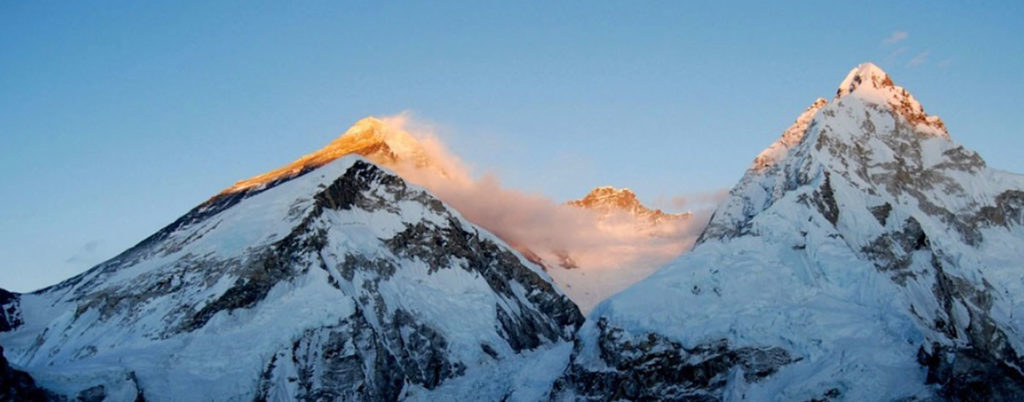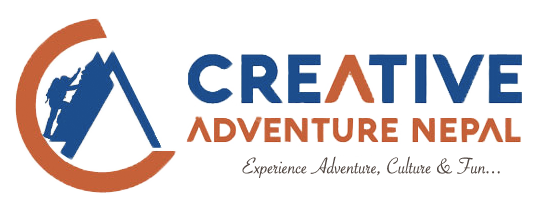
In 1956, a Swiss expedition ascended Mount Lhotse (8516). Mount Lhotse, which means "South peak," is a portion of the Everest massif, just to the south of Everest. Its lower summit, Mount Lhotse Shar 8383m, is often regarded as a distinct 8000m peak. Mount Lhotse, which means "South peak," is a part of the Everest massif, just to the south of Everest. Mount Lhotse's main route is through Everest's South Col. Despite the activities on Mount Everest, Lhotse remained the world's highest unclimbed summit by 1955.
Lhotse has three peaks, the lowest of which is 8,383 meters (Lhotse Shar Shar). Lhotse East is the next highest, reaching 8,413 meters. Lhotse Main, at 8,516 meters, is the tallest. The best time for the Mt. Lhotse expedition has two main seasons. From April through May. The post-monsoon season lasts from late September until the beginning of October.
The Lhotse Couloir is the most direct route to the top. It's on the mountain's west face, the Lhotse Face. The couloir is a large ice canyon that faces the expedition participants with the most challenging section of the climb. Its ascent might be as steep as 80 degrees at times. The Yellow Band and the previously mentioned Geneva Spur are two rocky locations. Climbers passing through the gully must be mindful of frequent precipitation and the rugged terrain.
Program ( 44 Days )
The Creative Adventure Nepal personnel will meet you at Tribhuwan Airport and transport you to your accommodation. You may unwind there or go sightseeing in the city.
Our guide will meet you to discuss and prepare you for your expedition to Mt. Lhotse. We'll finalize your travel plans and accommodations. Also, you will meet your team, guides, and Sherpa to give you an overview of the regular path to Mt. Lhotse.
On this day, we will complete government paperwork like an Expedition Permit, National Park permits, and other paperwork. Also, there will be a briefing at the Ministry of Tourism.
Our Lhotse Expedition begins with a 35-minute domestic flight to Lukla. Lukla Airport is one of the world's most dangerous airports, situated between a cliff and a hill with a narrow landing strip. After that, we'll hike for 3-4 hours to Phakding (8km). There are several cultural communities along the path, and you can see Mount Khumbila and Mount Kusum Kangraru. We'll spend the night at Phakding.
Along the Dudh Koshi River, we will hike up to Namche Bazaar. The trail we take passes through pine trees and multiple suspension bridges. In Monjo, we'll also view the Sagarmatha National Park's entrance. We'll receive our permits there and then ascend to Namche Bazaar, where we'll spend the night. This walk will be 10 kilometers long and take up to 5 hours to complete.
Acclimatization day is a day where we rest and allow our body to adjust to the new environment. Namche Bazar is the crucial trade hub for the Himalayan region. There are several cafés and restaurants, and the market is bustling with activity and a pleasant environment. There is an internet connection and a hospital, post office, and health post services. There will also be a brief trek to visit the surrounding communities.
This 11-kilometer course will take 5-6 hours and go along the Dudh Koshi River's glacier. However, it provides a breathtaking vista of Mount Everest, Mount Ama Dablam, Mount Nuptse, and countless other peaks. The trail leads to Sanasa via a magnificent Rhododendron woodland. When we get to Sanasa, we will come to a fork in the road that will take us to either Gokyo Valley or Everest Base Camp. We hike up the Tengboche Monastery by the second way.
The journey begins on a sloping trail, then progressively ascends through the forest and lonely lodges until it reaches Pangboche. Pangboche is a Sherpa village famous for its monastery. The walk continues through meadow meadows and different tea houses beyond Pangboche, taking 3 hours to reach Pheriche. Stay the night at the camp or a lodge.
After leaving Pheriche, the trail wanders across an open valley, beautiful in good weather. The primary route rises straight from Dingboche to join the path shortly before the bridge to Tukla. Simultaneously, a secondary road diverges to the left and heads straight for the bridge, passing across a few dangerous stones. Climb one of the several trails to the higher plain from the ridge below Dingboche. Various ways are getting to the Tukla Bridge to select from. The ascent becomes difficult shortly after leaving Tukla. It's a two-hour hike to Lobuche from there. We are staying at a camp or lodge for the night.
The Lhotse Expedition becomes more complicated when the path passes among rocks and glaciated rivers. Our first goal during these days is to get acclimatized in Lhotse Base Camp/Everest Base Camp, where you can witness vistas of snow all around you and Mount Pumori, Nuptse, and Lola. The elevation of Lhotse Base Camp is 5364 meters above sea level.
By the time we reach Base Camp at the foot of the Khumbu Icefall, Our team will already create a path with ropes and ladders to Camp 1. Our capable Sherpa staff will be hard at work transporting lots of gear up the mountain.
Before relocating to Camp 1 (5,900m/19,500ft), we make two ventures into the Khumbu Icefall for ladder training and familiarization. We travel to Camp 2 (6,400m/21,000ft) for many nights of acclimatization after a few nights at Camp 1, with a foray to the Lhotse face thrown in to boost our acclimatization. Our Camp 2 base is equipped with separate cook tents and a heated dining tent with tables and chairs. Mountain camps have a communal sleeping arrangement.
We travel through Camps 1 and 2 and spend one night at Camp 3 (7,300m/23,700ft) to finish our acclimatization program after a respite at Base Camp. We then return to Base Camp, waiting for a weather window to attempt the summit. We'll continue up past the campgrounds and set up the last camp just a few hundred meters from the summit couloir when we're ready. Depending on if we are mending rope at the time, the ascent should take 6-8 hours. If everything goes well, we'll descend to Camp 2 after the summit, then return to Base Camp the following day.
Our plan for the day is to return to Base Camp first thing in the morning. We'll spend the night in the Base Camp. After the exhausting ascents and descents, we will recuperate for two days in the base camp. You will mainly spend the day relaxing, packing, and cleaning the campground. You may also go exploring the surrounding areas.
From Lhotse Base Camp to Pheriche, we begin our descent. The walk to Pheriche will span 14 kilometers and take 7 hours. At Pheriche, we spend the night.
We return to Namche Bazar day. As we descend, we can take in the scenery. The trial will last 7 hours and cover up to 15 kilometers. Overnight stay at a lodge.
We take the same downhill stairs from Namche Bazaar to Lukla. We'll also pass through the Sagarmatha National Park checkpoint to go to Lukla. It's an 18-kilometer, 7- to 8-hour excursion that's not difficult. We recover and prepare for our flight the next day in a lodge.
Ending our adventurous journey, we fly back to Kathmandu in the morning, which takes about 35 min. You can rest as soon as you reach your hotel and feast on some delicious meal.
You can spend the day exploring Kathmandu and the surrounding cities of Patan and Bhaktapur. Visit museums and cultural attractions and take a tour of Durbar Square. You may also visit one of the many taverns, restaurants, cafés, or spas. To learn more about our culture, you can go to temples and cultural places to learn more about our culture.
Today marks the end of the Mt. Lhotse expedition. A Creative Adventure Nepal representative will take you to the airport 3 hours before your flight. We hope you had a wonderful time on your tour and captured memories you will cherish and share with your loved ones.
Cost Include
- 5 Nights accommodation in Kathmandu with bed & Breakfast (hotel 3 star).
- Permit fee of Lhotse 8516m Expedition
- Food for Trekking and Expedition period for Lhotse
- Staff: Base camp Guide, Cook, Cook helper
- Porters or Yak porter Lukla to Base camp & Base camp to Lukla
- Kathmandu -Lukla - Kathmandu flights with Cargo 50 KG Per member
- Equipment allowance, daily allowance for Liaison officer, expedition crew
- Insurance for Nepalese expedition crew.
- 1 tent for 1 person for Expedition north face brand
- Mat, dining tent, Toilet tent, Mess tent, Store tent, Table and chairs trekking for the expedition
- Local transportation in Kathmandu (Airport-hotel-airport)
- Emergency Oxygen -Mask and regulator
- Satellite phone (Pay calls)
- Fare Well dinner
Cost Exclude
- PERSONAL equipment for climbing & trekking
- Personal & medical Insurance of expedition
- Climbing food, Gas & stove above Base camp
- Lunch & dinner in Kathmandu
- Emergency Rescue evacuation by helicopter incase needed
- Walki Takie permit & Satellite phone permit
- Oxygen & Mask -regulator
- Personal expenses
- Bar Bills & beverage
- Garbage Deposit USD 3000.00 (Sharing of the total person) and Deposit fee will be not refunded if the clients (climber) don't take back their garbage to Namche Bazaar & Kathmandu

